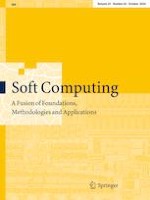12.04.2020 | Methodologies and Application
A bi-objective function optimization approach for multiple sequence alignment using genetic algorithm
Erschienen in: Soft Computing | Ausgabe 20/2020
EinloggenAktivieren Sie unsere intelligente Suche, um passende Fachinhalte oder Patente zu finden.
Wählen Sie Textabschnitte aus um mit Künstlicher Intelligenz passenden Patente zu finden. powered by
Markieren Sie Textabschnitte, um KI-gestützt weitere passende Inhalte zu finden. powered by
